Invasive, shrimp-sucking parasite continues northward Pacific expansion
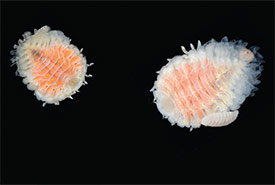
The cough drop-sized parasite Griffen's isopod, native to Asia and Russia, has decimated mud shrimp populations along the West Coast. The parasite on the right is a female with the much smaller male attached. (Florida Museum photo by Amanda Bemis and Gustav Paulay)
By Josh Silberg and Natalie van Hoose Researchers have identified an invasive, blood-sucking parasite on mud shrimp in the waters of British Columbia’s Calvert Island. The discovery represents the northernmost record of the parasite on the...
True colours: The science of fall colours
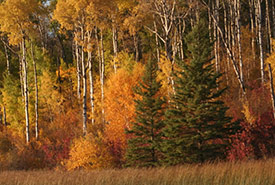
Riding Mountain, MB (Photo by Cathy Shaluk)
Canada’s forests are home to many colourful characters. Throughout the year you’ll see vibrant wildflowers, decorated songbirds and gaudily painted insects and fungi. Each has its moment of glory in the annual forest parade. But the...
Seeing Canada through the trees: How Canadians can lead the world in forest conservation
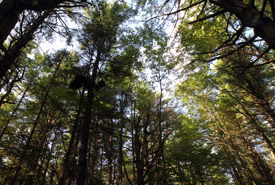
Whitemouth River Watershed Natural Area, MB (Photo by Mike Dembeck)
Forests define our Canadian geography and identity. One-third of our country is covered with trees, and forests occur in every province and territory. Jobs in forestry employ more than 200,000 Canadians and support many Indigenous and northern...
Are you gonna go their way?
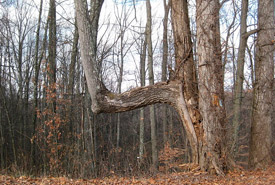
Trail tree in Tar Hallow State Forest, Ohio (Photo from Wikimedia Commons)
A walk through a forest can lead to wonderful adventures and new discoveries, both big and small. In most forests, it’s easy to get lost in the tree’s grandeur — figuratively and quite literally. While some of us may use a...
A throwback to working in Backus Woods
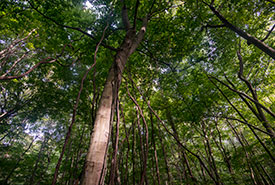
Forest canopy in Backus Woods, ON (Photo by Neil Ever Osborne)
I had the pleasure of working for the Nature Conservancy of Canada (NCC) for the summer of 2019 as a conservation technician out of the Norfolk County, Ontario, office. When I first came to Norfolk, I was expecting to see mostly farmland and...
Emblems of Canada: tree edition
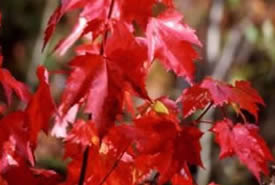
Red maple (Photo by Jean Isaacs)
Trees have played a significant cultural role in the lives of many Canadians; they are engrained in our national identity. Take the Canadian flag, for instance. It features a single, prominent red maple leaf in the centre, which speaks to the...
What the knowledge of how trees communicate means for forest conservation
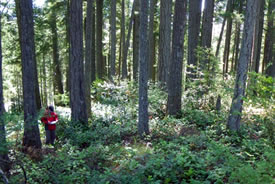
A shady Douglas-fir forest (Photo by Jenny McCune)
Japanese people are generally familiar with shinrin-yoku or forest bathing — the practice of being immersed in a forest. In Germany, the concept is referred to as Waldsehligkeit, a feeling of profound well-being that comes from being...
A little help from my friends: How fallen leaves support biodiversity and climate
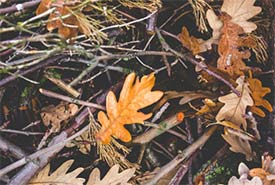
Leaf litter (Photo by Kaboompics.com via Pexels/Canva)
What’s your favourite part of autumn? Is it carving pumpkins for Halloween or going for long walks in the crisp air? Perhaps it’s spending time with loved ones over a hearty meal. But the main hallmark of autumn is the dramatic...
Tackling invasive European common reed
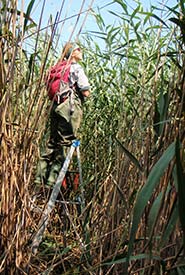
Me on a six-foot ladder amidst European common reed, to illustrate its height and density. (Photo by Courtney Robichaud)
The highs and lows of monitoring the large-scale suppression of Phragmites australis spp. australis My field crew and I are covered in scratches. I’m a PhD student studying the recovery of native vegetation after invasive species control,...
Connection and conservation during COVID-19
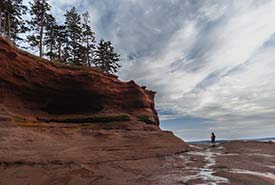
Exploring Burntcoat Head Park in Noel, Nova Scotia. (Photo by Kyle Erickson)
A year ago, my husband and I sold our house, packed up everything we owned — including two cats — and relocated from Edmonton to Halifax. Between new jobs, a new home and a new city, we didn’t have a lot of time to get involved...

